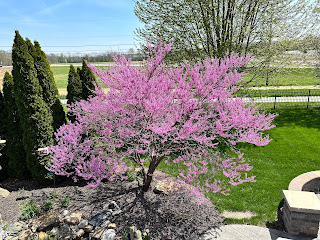Herbs in the landscape
One of the easiest ways to turn your suburban home into a suburban homestead is to plant edible plants in place of traditional landscape plants. Herbs are a great way to start!
Before you get too carried away with plants, you'll want to invest in a food dehydrator. This will allow you to use your herbs year-round. I like to use mine freshly picked from the garden, but I also dehydrate a large amount for use in the off-season. Note: You will likely need to adjust your recipes depending on whether or not you are using fresh or dried herb. In most cases, you'll use more of the fresh herb and less of the dried herb in recipes. Generally speaking, dried herbs are more concentrated.
I like the size of my Hamilton Beach Dehydrator, and I have used it for drying all sorts of food products from my garden. (I've even used it to dry some veggies that I purchased from the grocery when my family couldn't eat them quickly enough!). I would definitely purchase this dehydrator again. It would make a great gift for the gardener or foodie in your life as well!
(As an Amazon Associate, I earn from qualifying purchases. I get commissions for purchases made through links in this post.)
Once you have grown your herbs, use gloves and comfy grip/spring loaded garden tools to harvest them. Use them fresh or dehydrate them, and you will have lots of tasty meals to come! Replacing those traditional landscape plants with herbs can really up your suburban homesteading game!
General information on growing your own food.
It is important to be sure that you are identifying the plants correctly, and it is always best to err on the side of caution. If you are unsure about whether a plant is edible, it is best to leave it alone.
Many plants have medicinal properties as well. The properties could interact poorly with certain medications or health conditions. Consult with your healthcare professional.
This blog is for informational purposes only and does not constitute medical advice. The information on this blog is not intended to diagnose, treat, cure, or prevent any disease. Always consult with a doctor before making any changes to your diet or lifestyle.
The author of this blog is not responsible for any damages or losses that may occur as a result of following the information on this blog. Do your due diligence when researching and growing plants.





Comments
Post a Comment